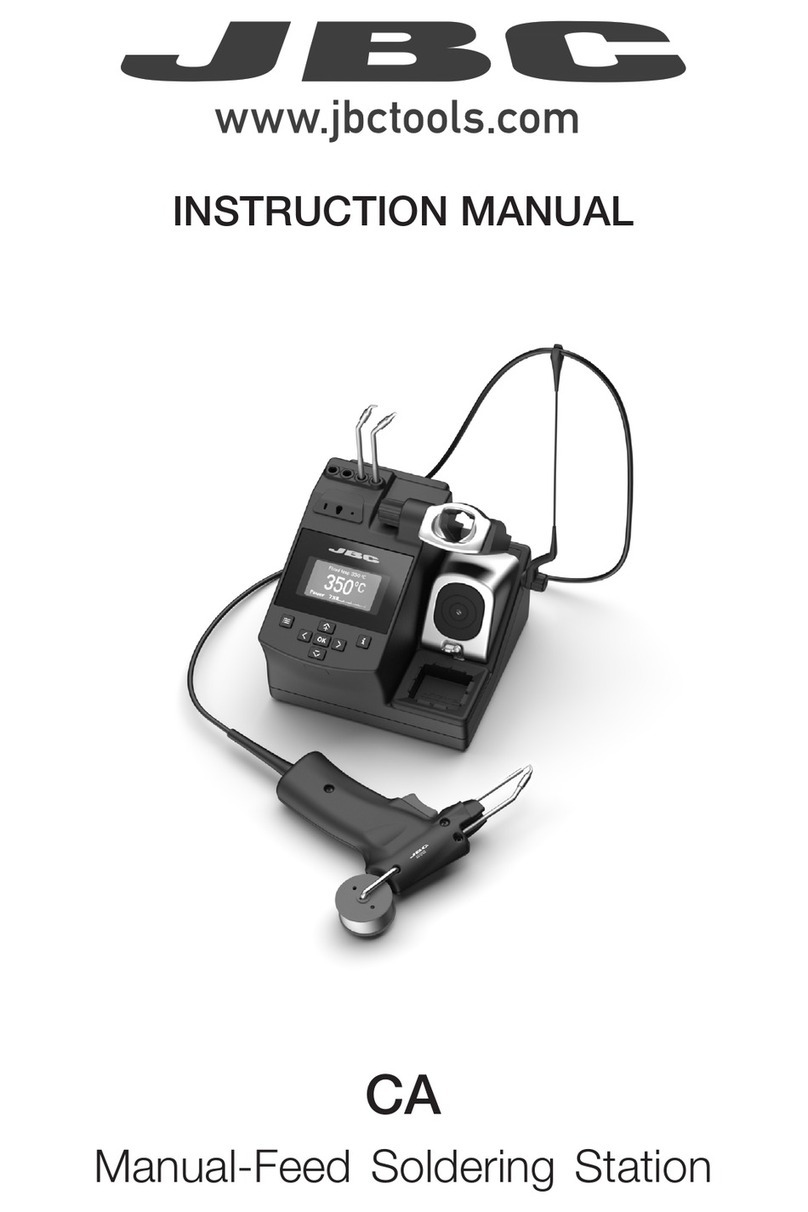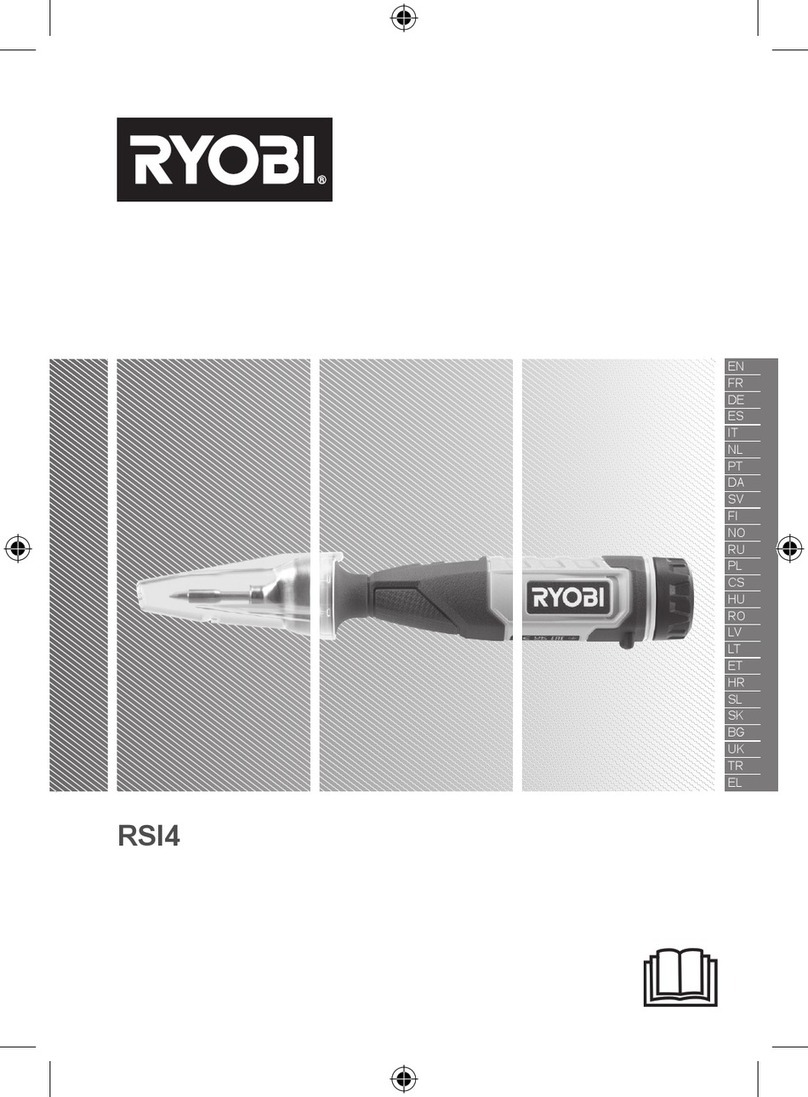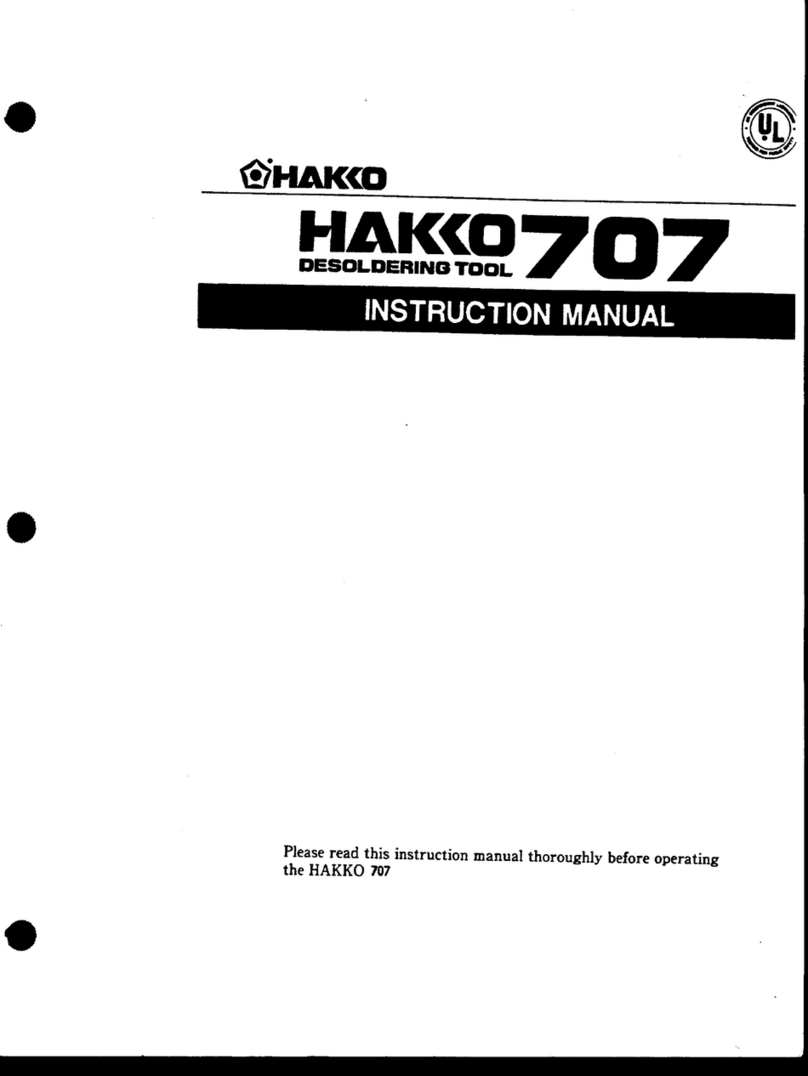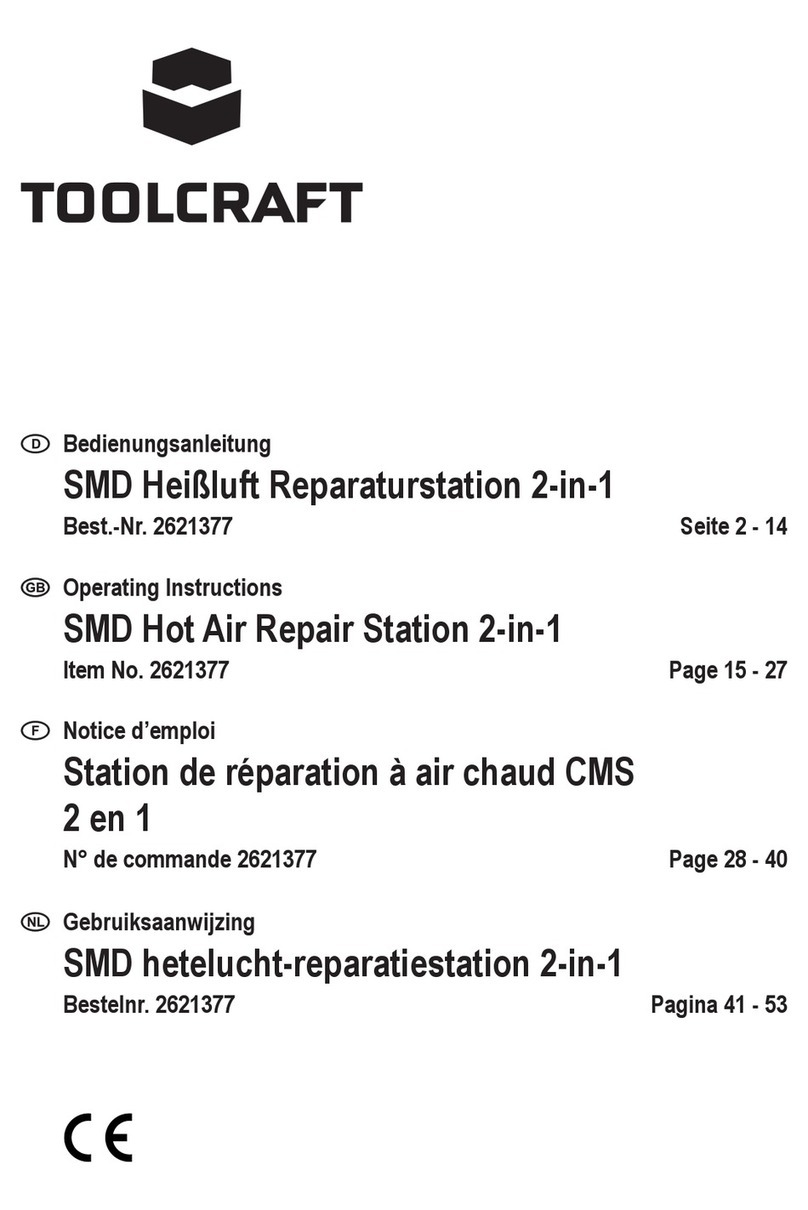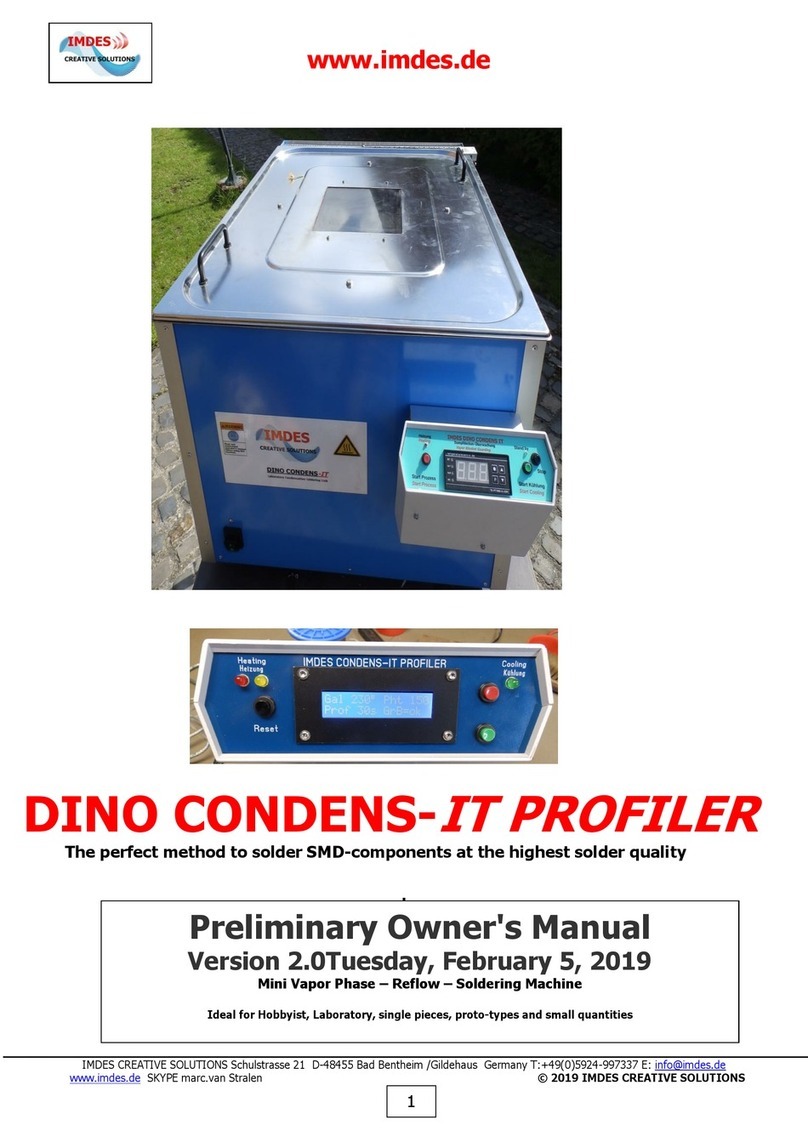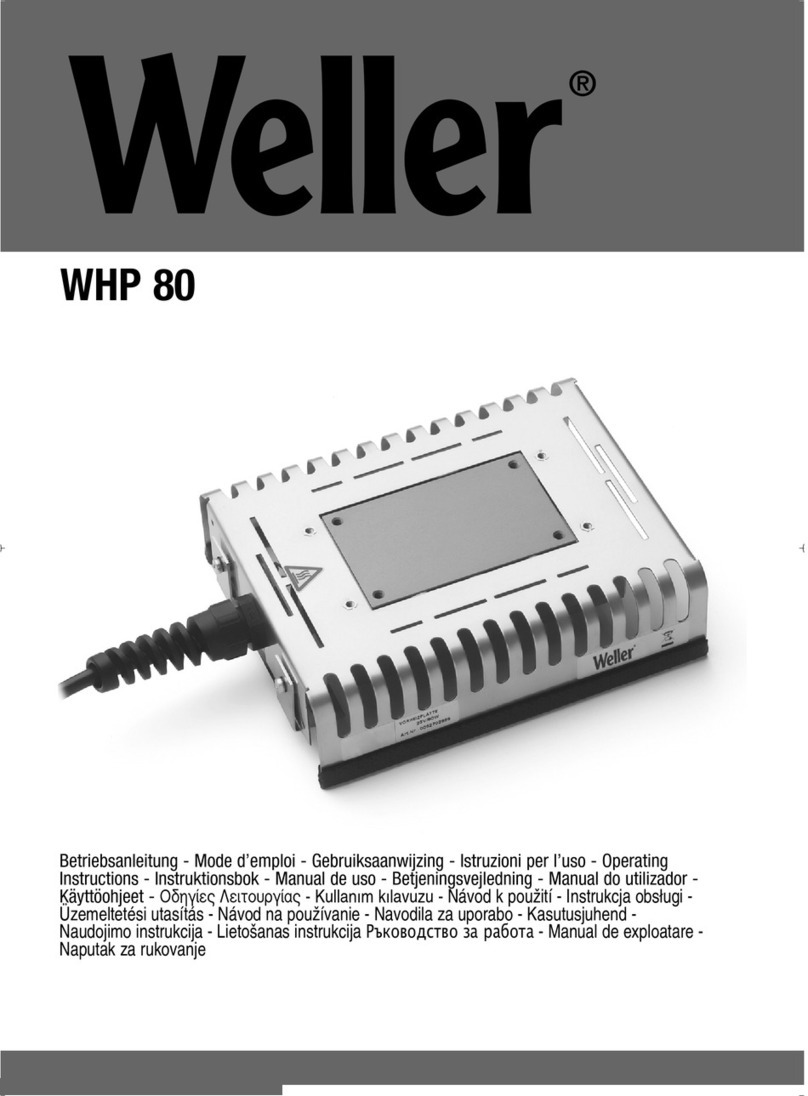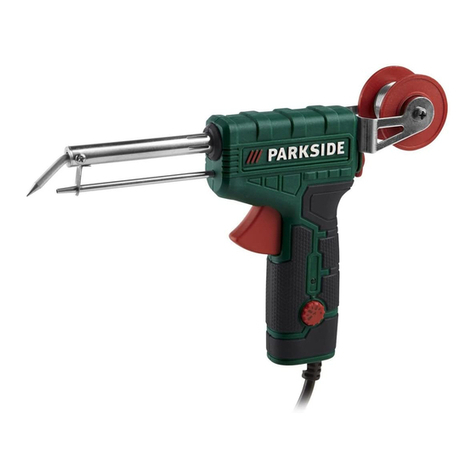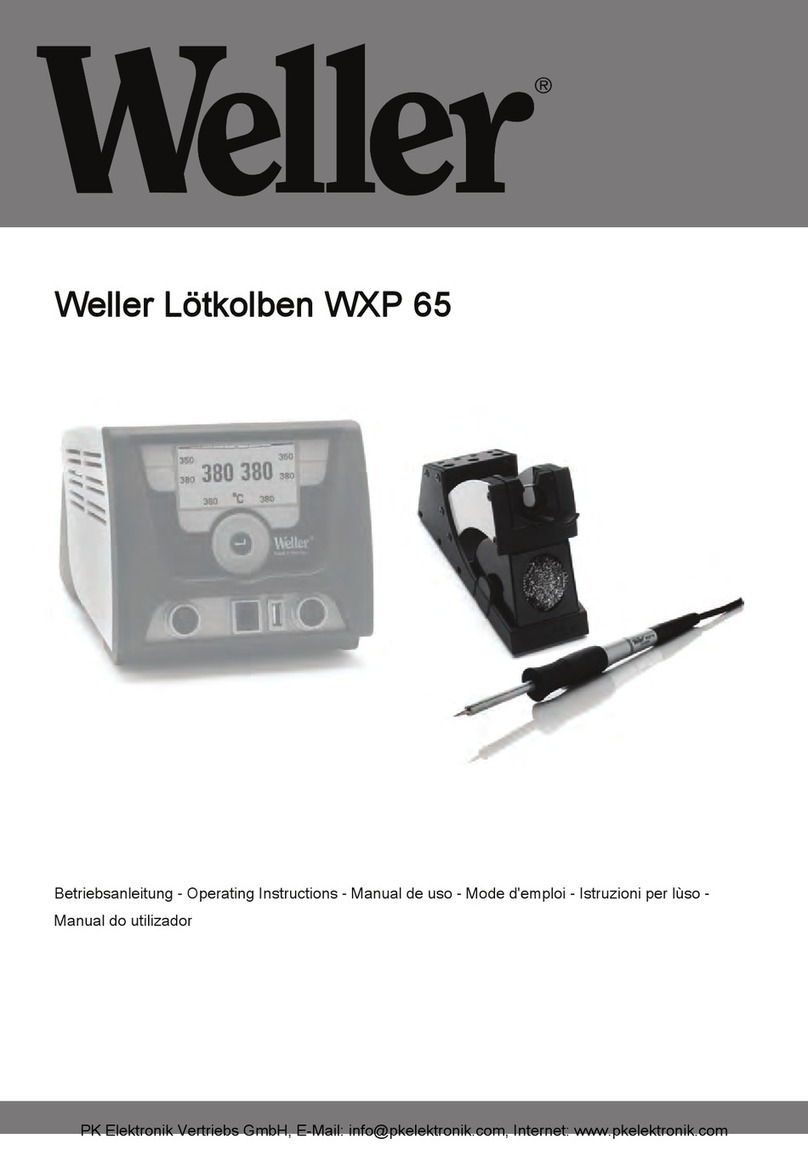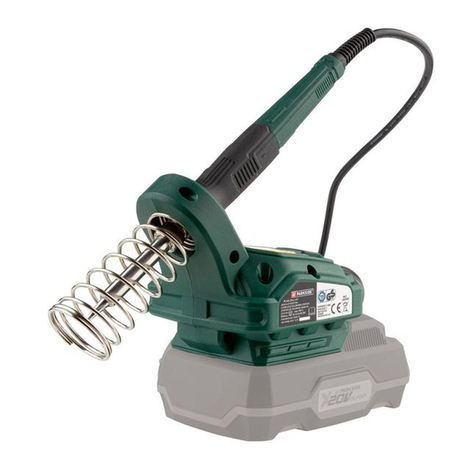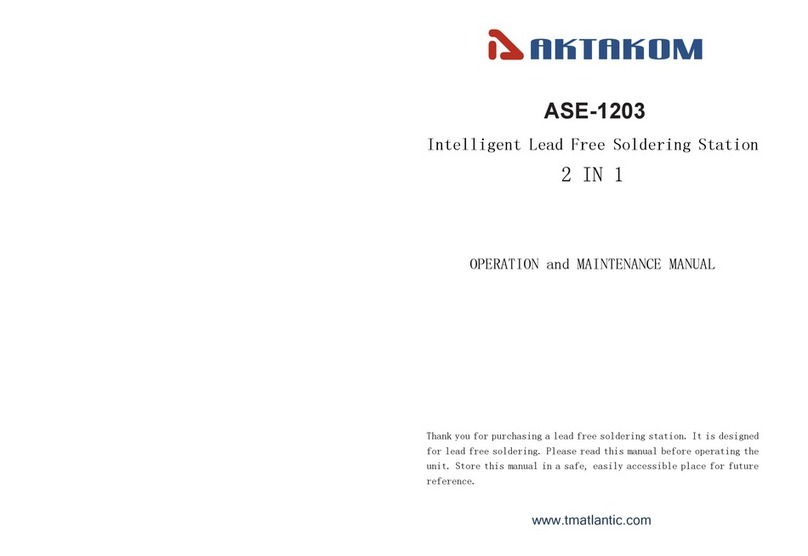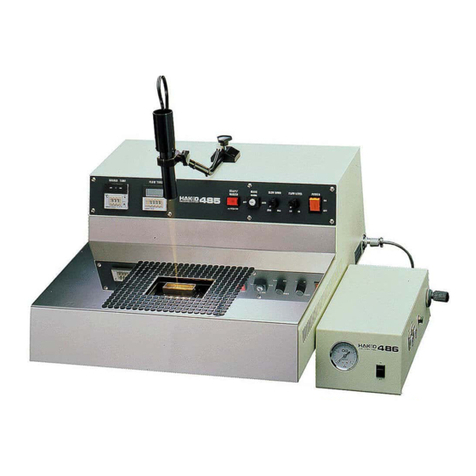jcb 1THT User manual

SERVICE MANUAL
DUMPER
1THT
EN - 9813/5200 - ISSUE 2 - 07/2018
This manual contains original instructions, verified by
the manufacturer (or their authorized representative).
Copyright 2017 © JCB SERVICE
All rights reserved. No part of this publication may
be reproduced, stored in a retrieval system, or
transmitted in any form or by any other means,
electronic, mechanical, photocopying or otherwise,
without prior permission from JCB SERVICE.
www.jcb.com
Foreword
The Operator's Manual
You and others can be killed or seriously injured
if you operate or maintain the machine without
first studying the Operator's Manual. You must
understand and follow the instructions in the
Operator's Manual. If you do not understand
anything, ask your employer or JCB dealer to
explain it.
Do not operate the machine without an Operator's
Manual, or if there is anything on the machine you
do not understand.
Treat the Operator's Manual as part of the machine.
Keep it clean and in good condition. Replace the
Operator's Manual immediately if it is lost, damaged
or becomes unreadable.
Contents
01 - Machine
06 - Body and Framework
09 - Operator Station
15 - Engine
18 - Fuel and Exhaust System
21 - Cooling System
24 - Brake System
25 - Steering System
27 - Driveline
30 - Hydraulic System
33 - Electrical System
72 - Fasteners and Fixings
75 - Consumable Products
78 - After Sales

15 - Engine
24 - Air Filter
03 - Outer Element
15 - 58 9813/5200-2 15 - 58
03 - Outer Element
Clean ............................................................. 15-58
Remove and Install ....................................... 15-59
Clean
1. Make the machine safe.
2. Get access to the air filter.
3. Clean the area around the air cleaner.
4. The dust ejector should be squeezed to release
any build up of dust in the air cleaner case before
removing the elements Refer to Figure 94.
Figure 94.
B
C
D
A
F
E
ASediment cup BOuter element
CInner element DBody
EDust ejector FClamp
5. Loosen the clamps holding the sediment cup to
the air cleaner body and pull cup clear. Refer to
Figure 94.
6. Pull out the outer element from the body.
6.1. Clean the outer element by tapping gently
on a firm object or by blowing gently with
compressed air from inside the element.
Refer to Figure 94.
6.2. Replace the outer element, if it is damaged
or severely contaminated.
7. Do not clean the inner element.
7.1. Replace the inner element, if it is
contaminated.
8. Clean the outer body and sediment cup.
9. Assemble the cleaner.

15 - Engine
24 - Air Filter
03 - Outer Element
15 - 59 9813/5200-2 15 - 59
Remove and Install
Remove
1. Make the machine safe. Refer to (PIL 01-03).
2. Isolate the battery. Refer to (PIL 33-03).
3. Open the air cleaner end cap clips (x2).
4. Remove the air filter assembly end cap.
Figure 95.
A
B
A
AEnd cap clips (x2)
BAir filter assembly end cap
5. Remove the outer air filter element.
Figure 96.
C
COuter air filter element
6. Remove the inner air filter element.
Figure 97.
D
DInner air filter element
Install
1. The installation procedure is the opposite of the
removal procedure.

15 - Engine
54 - Flywheel
15 - 84 9813/5200-2 15 - 84
54 - Flywheel
Contents Page No.
15-54-00 General ........................................................................................................................... 15-85
15-54-12 Drive Plate ..................................................................................................................... 15-86

15 - Engine
54 - Flywheel
00 - General
15 - 85 9813/5200-2 15 - 85
00 - General
Introduction
Flywheels are used to provide continuous energy in
systems, where the energy source is not continuous.
In such cases, the flywheel stores energy when
torque is applied by the energy source, and it
releases stored energy when the energy source is
not applying torque to it.
In a reciprocating engine, a flywheel is used to
maintain constant angular velocity of the crankshaft.
The flywheel, which is mounted on the crankshaft,
stores energy when torque is exerted on it by a firing
piston, and it releases energy to its mechanical loads
when no piston is exerting torque on it.

15 - Engine
54 - Flywheel
12 - Drive Plate
15 - 86 9813/5200-2 15 - 86
12 - Drive Plate
Remove and Install
Remove
1. Make the machine safe.
Refer to: PIL 01-03-27.
2. Isolate the battery.
Refer to: PIL 33-03.
3. Remove the wheel drive pump.
Refer to: PIL 27-31-00.
4. Remove the bolts 1 (x8).
5. Remove the adaptor plate.
Figure 99.
B
A
AAdaptor plate
BBolts 1 (x8)
6. Remove the bolts 2 (x6).
7. Remove the drive plate.
Figure 100.
D
C
CBolts 2 (x6)
DDrive plate
Install
1. The installation procedure is the opposite of the
removal procedure. Additionally do the following
step.
2. Tighten the bolts to the correct torque value.
Table 29. Torque Values
Item Description Nm
B Bolts 1 30
C Bolts 2 30

15 - Engine
75 - Starter Motor
00 - General
15 - 101 9813/5200-2 15 - 101
00 - General
Introduction .................................................. 15-101
Health and Safety ........................................ 15-102
Component Identification ............................. 15-103
Check (Condition) ........................................ 15-104
Remove and Install ..................................... 15-106
Introduction
The electric starter motor is either a permanent-
magnet or a series-parallel wound direct current
electric motor with a starter solenoid mounted on to
it. When the current from the battery is applied to the
solenoid, through the key-operated ignition switch,
the solenoid engages a lever that pushes out the
drive pinion on the starter driveshaft and meshes the
pinion with the starter ring gear on the flywheel of the
engine.
The solenoid also closes high current contacts for the
starter motor, which begins to turn. Once the engine
starts, the key-operated ignition switch is opened,
a spring in the solenoid assembly pulls the pinion
gear away from the ring gear, and the starter motor
stops. The starter motor pinion is clutched to the drive
shaft through an overrunning clutch which permits
the pinion to transmit drive in only one direction. Drive
is then transmitted through the pinion to the flywheel
ring gear, but if the pinion remains engaged (as for
example because the operator fails to release the
key as soon as the engine starts, or if there is a short
and the solenoid remains engaged), the pinion will
spin independently of the drive shaft, this prevents
the engine driving the starter.
The starter motor is only designed for intermittent
use, the electrical components are designed only to
operate for a time period of 20 s before overheating.

15 - Engine
75 - Starter Motor
00 - General
15 - 102 9813/5200-2 15 - 102
Health and Safety
WARNING Make the machine safe before
working on it. Park the machine on level ground
and lower the loader arm. Stop the engine and
remove the ignition key. Make sure the park brake
is engaged. Disconnect the battery to prevent the
engine being started. Block all four wheels.
Notice: Before carrying out arc welding on the
machine, disconnect the battery and alternator to
protect the circuits and components. The battery
must still be disconnected even if a battery
isolator is installed.
Notice: Do not isolate the machine electrics when
the engine is running, this may cause damage to
the machine electrics.

15 - Engine
75 - Starter Motor
00 - General
15 - 103 9813/5200-2 15 - 103
Component Identification
Figure 107.
3
2
1
1Solenoid
2Brush gear
3Tie bolts
Figure 108.
B
A
D
C
ASolenoid positive terminal (From battery) BSolenoid terminal (From ignition switch)
CNegative terminal (To ground) DSolenoid positive after contact terminal (To
motor)

15 - Engine
75 - Starter Motor
00 - General
15 - 104 9813/5200-2 15 - 104
Check (Condition)
Before carrying out the multimeter tests, check
the battery condition and make sure that all the
applicable electrical connections are clean and tight.
Make sure that the starter motor fixing bolts are
tightened to the correct torque.
To prevent the engine starting during the tests make
sure that the applicable engine stop fuse is removed.
Check the readings in the following sequence using
a multimeter. Unless otherwise stated, the readings
must be taken with the ignition switch held in the
start position (HS) and the controls set to enable the
starter motor. The readings are shown for both 12
V and 24 V systems. The highest values are for
machines with 24 V systems. Identify the applicable
system before carrying out the tests.
Do not operate the starter motor for more than 20 s
at one time. Let the starter motor cool for at least 2
min between starts.
1. Connect the multimeter across the battery
terminals.
Figure 109.
1.1. Reading in start position approximately
Voltage: 10 V
Voltage: 20 V
1.2. Minimum permissible reading in start
position
Voltage: 9.5 V
Voltage: 18 V
1.3. A low reading probably indicates a fault in
the starter motor.
2. Connect the multimeter between the starter main
terminal and the commutator end bracket. In the
start position, the reading should not be below
the reading obtained in 1 by any more than
Voltage: 0.5 V
Voltage: 1 V
Figure 110.
AStarter main terminal
BCommutator end bracket (Starter earth
connection)
2.1. Minimum permissible reading in start
position
Voltage: 9 V
Voltage: 17 V
2.2. If the reading is within this limit, continue to
3. If the reading is outside the limit, proceed
to 4.
3. Connect the multimeter between the solenoid
terminal and a good earth. Minimum permissible
reading in start position
Voltage: 8 V
Voltage: 16 V
Figure 111.
CSolenoid terminal
4. If the reading is less than specified, connect
the multimeter between the start relay switched
output and earth. A fault is indicated with the
wiring from the start relay to the solenoid if the
reading increases to
Voltage: 8 V
Voltage: 16 V

15 - Engine
75 - Starter Motor
00 - General
15 - 105 9813/5200-2 15 - 105
Figure 112.
AStarter main terminal
BStarter earth connection
CSolenoid terminal
DStart relay feed
EStart relay switched output
HBattery positive and solenoid connection
4.1. If the reading is less than specified, connect
the multimeter between the start relay feed
and earth.
4.2. A faulty start relay or a fault in the feed to
the relay solenoid is indicated if the voltage
increases to
Voltage: 8 V
Voltage: 16 V
4.3. Check also the solenoid earth connection.
The fault must be in either the starter switch
or in the wiring between the solenoid, starter
switch, and the start relay, if the reading
between terminal and earth is less than
Voltage: 8 V
Voltage: 16 V
5. Connect the multimeter between battery
negative and starter earth connection. The
reading in the start position should be practically
zero, maximum permissible reading
Voltage: 0.25 V
Figure 113.
BStarter earth connection
5.1. If the reading is above the maximum
permissible voltage, a high resistance in the
earth lead or connections is indicated.
6. Connect the voltmeter between battery positive
and the starter main terminal. With the starter
switch off, the voltmeter should indicate battery
voltage, but it should fall to practically zero when
the switch is turned to the on position, maximum
permissible reading
Voltage: 0.25 V
Figure 114.
AStarter main terminal
7. If the reading is above the maximum permissible
voltage, a high resistance is present in the
insulated lead or in the solenoid. Connect the
multimeter between the battery positive and
solenoid connection. If the multimeter now reads
zero with the switch closed, the fault is in the
solenoid.
Figure 115.
HBattery positive and solenoid connection
8. Finally install the engine stop fuse.

15 - Engine
75 - Starter Motor
00 - General
15 - 106 9813/5200-2 15 - 106
Remove and Install
Remove
1. Make the machine safe.
Refer to: PIL 01-03-27.
2. Isolate the battery.
Refer to: PIL 33-03.
3. Remove the floor plate.
Refer to: PIL 09-78-00.
4. Remove the cable ties.
Figure 116.
W
WCable ties (x2)
5. Put a label on the electrical connectors to help
installation.
6. Remove the battery positive cable cover.
Figure 117.
Y
YCable cover
7. Disconnect the battery positive cable and the
starter solenoid connector.
Figure 118.
AA
Z
ZBattery positive cable
AA Starter solenoid connector
8. Remove the lower retaining bolt.
Figure 119.
A
ALower retaining bolt
9. Remove the upper retaining bolt.
Figure 120.
B
BUpper retaining bolt
10. Disconnect the electrical connector.

15 - Engine
75 - Starter Motor
00 - General
15 - 107 9813/5200-2 15 - 107
Figure 121.
C
CElectrical connector
11. Remove the starter motor.
Figure 122.
D
DStarter motor
Install
1. The installation procedure is the opposite of the
removal procedure. Additionally do the following
step.
2. Tighten the nuts to the correct torque value.
Table 31. Torque Values
Item Description Nm
A Lower retaining bolt 44
B Upper retaining bolt 44

15 - Engine
75 - Starter Motor
06 - Brush Gear
15 - 108 9813/5200-2 15 - 108
06 - Brush Gear
Remove and Install
The starter motor brushes are an integral part of the
starter motor.
This part is a non-serviceable part if it fails, replace
the complete starter motor.
Other manuals for 1THT
1
Table of contents
Other jcb Soldering Gun manuals
Popular Soldering Gun manuals by other brands
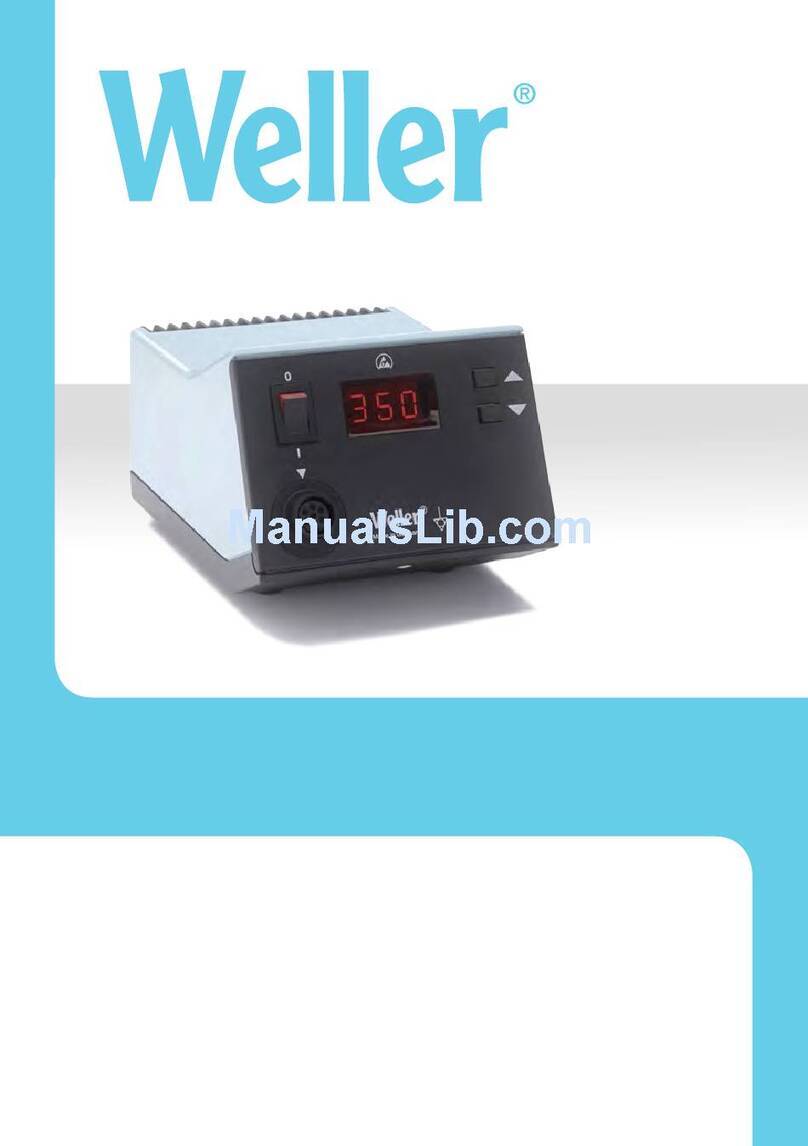
Weller
Weller WSD 81i operating instructions
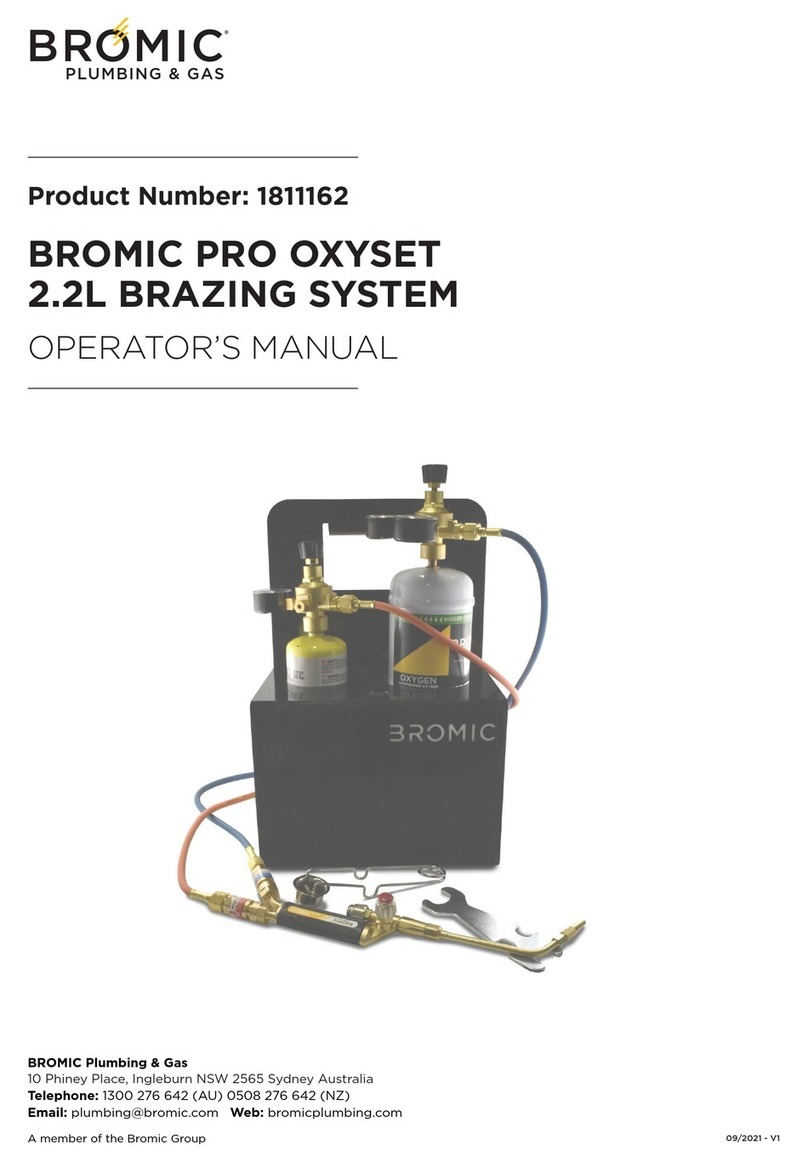
Bromic Heating
Bromic Heating PRO OXYSET Operator's manual
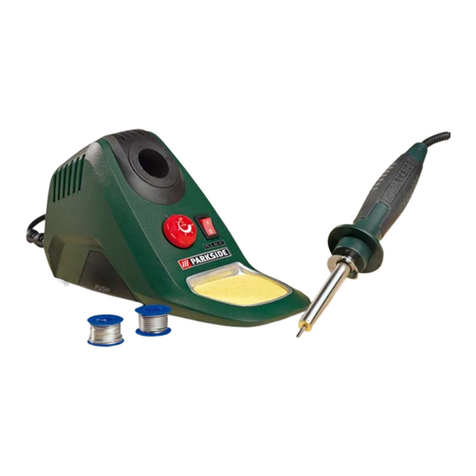
Parkside
Parkside PLS 48 A1 Operation and safety notes

OK International
OK International Metcal MFR-2200 Series System guide

Sealey
Sealey SD003 quick start guide
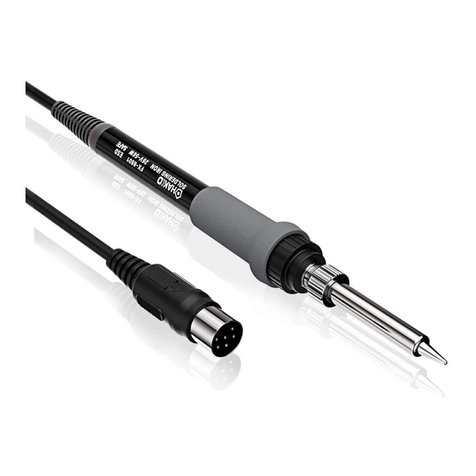
Hakko Electronics
Hakko Electronics FX-889 instruction manual

